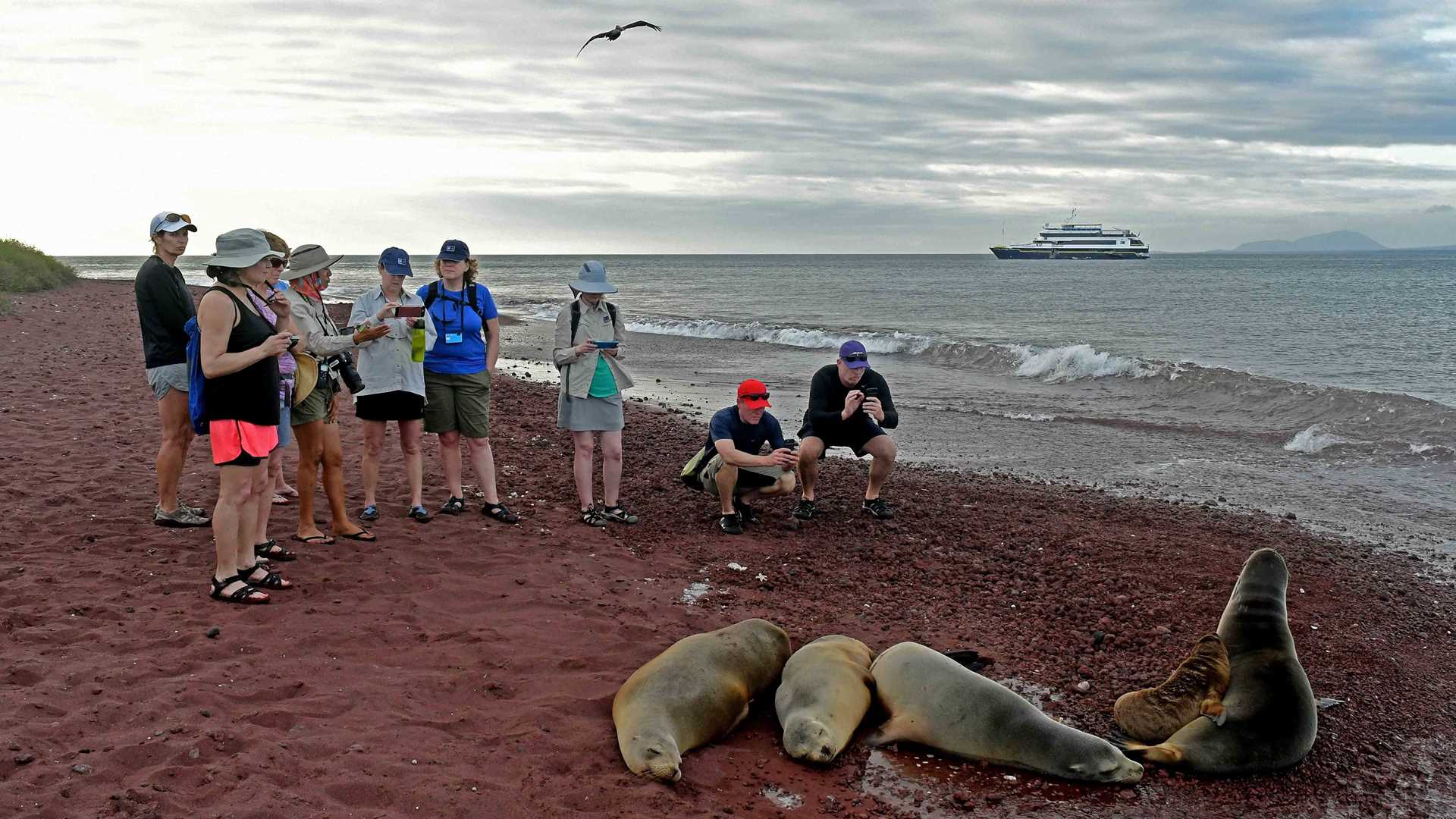It is the second day of our voyage in the Galapagos Islands and the first full day. Last night we motored for a few hours to reach the central north part of Galapagos, arriving early in the morning at Bartolome island. The sun rises quickly above the horizon at 6:05 am and immediately the sky turns to orange and the silhouette of the volcanic landscape appears on the horizon. At 6:15 am we disembarked to explore this dramatic moonscape covered by several volcanic formations, such as secondary volcanoes, cinder cones, spatter cones, and tuff cones. Along the trail we saw a few of the unique species that adapted well to the drought of the environment. As Darwin believed, the geology of Galapagos well deserves attention, as it seems like the beginning of life, the first appearance of beings on earth.
Every breath taken away by the many steps was rewarded when we reached the summit of the island. The pristine landscape and the remarkable landmark of the Galapagos, “Pinnacle Rock”, transported us to another time. It was similar to when species from a couple million years ago found the islands just emerged from the ocean bottom.
After breakfast all of our guests joined us for snorkeling; some went to a golden beach for an easy snorkeling on calm seas, other groups went for a longer outing along the coastline. Snorkelers encountered a mosaic of fish, Galapagos turtles, rays, sea stars, and white tipped reef sharks.
In the afternoon the National Geographic Islander anchored at a new place, called Rábida Island, after motoring two hours from Bartolome. Kayakers started the adventure along the shore in search of sea birds, iguanas, herons and sea lions basking on the black lava. Snorkelers went to explore the Galapagos submarine world, finding many types of reef fish, sea urchins, sea lions and many types of benthonic life. A long hike was offered to our guests and they disembarked on a nice red beach which has a high concentration of iron oxide. Along the walk we saw many types of land birds, such as finches and mocking birds. They were also two of the species collected by Charles Darwin during his five week visit around the Galapagos Islands in 1835.
Later we planned a short walk along the red beach of Rábida to experience the life of the sea lion. It is a great experience to sit on the beach and observe how these aquatic mammals behave. The beach master patrols its territory and guards the babies and juvenile sea lions, while the females rest on the beach after days of being at sea getting food to survive and to produce rich, nutritious milk to feed their pups. The interaction is phenomenal, just to hear all the sounds they make to communicate with each other.
The sun hides behind the horizon and we call our Zodiacs and leave the beach behind, heading back to our ship. We have great memories in our minds and feelings of peace in our hearts. Galapagos is a paradise, indeed! To be here is magical.







